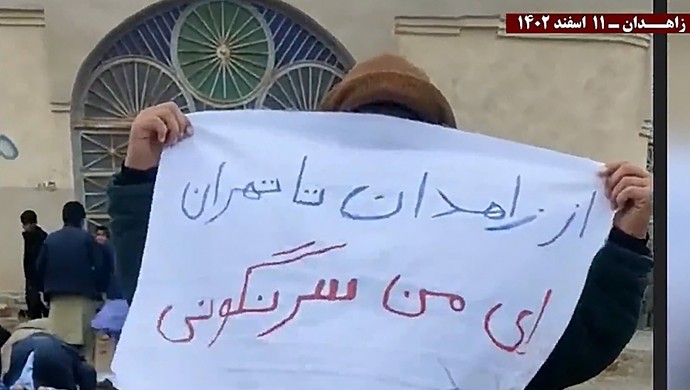

This act of defiance has not only exposed the regime’s vulnerability but has also amplified the people’s resounding call for the overthrow of the mullahs’ rule.
In the lead-up to the elections, Supreme Leader Ali Khamenei attempted to fortify his regime against the surging tides of dissent by declaring the elections a matter of “national security,” a thinly veiled effort to equate participation with support for his continued rule. His regime went to great lengths to ensure a favorable outcome, adopting dubious measures such as accepting non-photo identification for voting, not stamping voter documents, and even resorting to outright bribes to coerce participation.
Military and state personnel were particularly targeted in these coercive efforts, with soldiers being promised leave in exchange for their votes and state workers pressured to comply. Khamenei’s appeals to religious duty and national security, however, fell on largely deaf ears as polling stations across the country reported minimal turnout, a stark testament to the widespread disaffection with the regime’s oppressive governance.
Despite the regime’s attempts to manipulate the election outcome through rigging and intimidation, the boycott’s breadth rendered such measures futile, with even state media unable to ignore the palpable absence of voters. The few international journalists allowed to cover the event reported on the stark contrast between the regime’s portrayal of active polling stations and the reality of deserted voting booths, underscoring the regime’s anxiety over its legitimacy.
This electoral boycott marks a critical juncture for the Iranian regime, as it grapples with the consequences of growing public disillusionment amidst economic turmoil and stringent political and social restrictions. The low turnout, widely acknowledged even by international observers, signifies a profound crisis of legitimacy for the clerical establishment, raising serious questions about its ability to maintain control in the face of escalating public unrest.
The National Council of Resistance of Iran (NCRI) has hailed the boycott as a decisive rejection of the regime’s tyrannical rule, with its president-elect Maryam Rajavi predicting that this event will hasten the regime’s downfall. The widespread public rejection of the elections is seen not just as a political statement but as a harbinger of further uprisings, signaling a potentially transformative moment in Iran’s struggle for freedom and democracy.
Why was the parliamentary server’s breach a final nail to the coffin of the #Iranian regime's sham election? pic.twitter.com/cdsQa2yOAN
— NCRI-FAC (@iran_policy) February 29, 2024
As Iran stands at this crossroads, the regime’s future appears increasingly precarious. The people’s overwhelming refusal to participate in the sham elections has not only delegitimized the regime’s claim to democratic governance but has also emboldened the opposition, heralding a new chapter in Iran’s quest for a democratic future.

MEK Iran (follow us on Twitter and Facebook), Maryam Rajavi’s on her site, Twitter & Facebook, NCRI (Twitter & Facebook), and People’s Mojahedin Organization of Iran – MEK IRAN – YouTu







